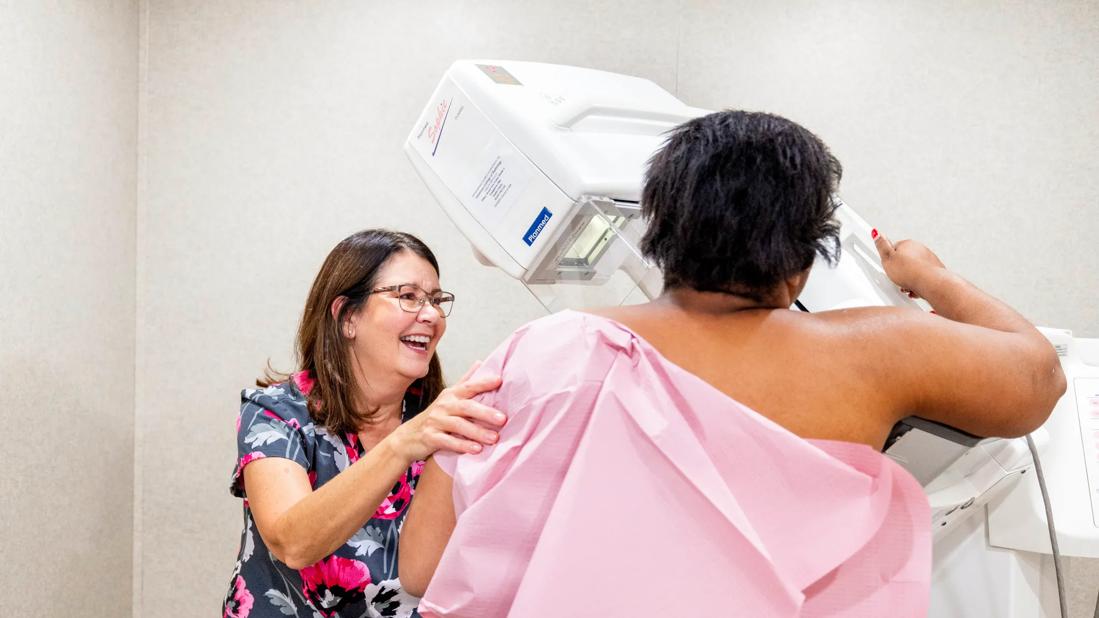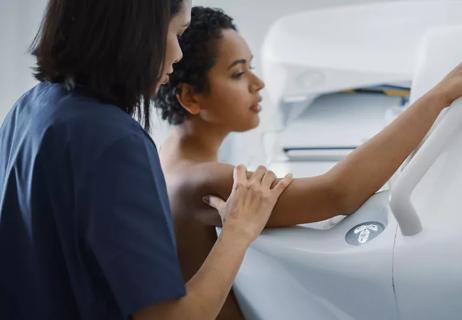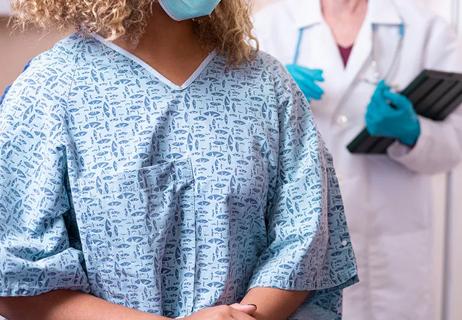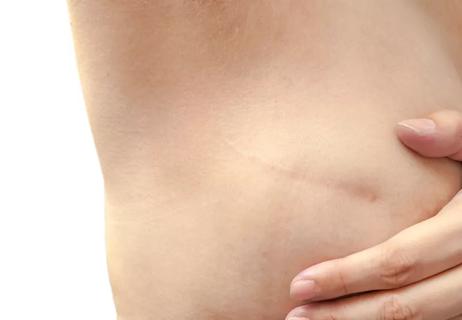One is the gold standard for breast screening, while the other is used as a complementary diagnostic tool

When you think of getting a breast cancer screening, you probably think of a mammogram. And rightfully so — a mammogram is known as the go-to tool when it comes to detecting breast cancer.
Advertisement
Cleveland Clinic is a non-profit academic medical center. Advertising on our site helps support our mission. We do not endorse non-Cleveland Clinic products or services. Policy
The U.S. Preventive Services Task Force recommends that all women start getting mammograms every two years from ages 40 to 75.
You may have also heard of or needed a breast ultrasound, which isn’t the same as a mammogram. While both a mammogram and an ultrasound are imaging tests used to detect breast cancer, a breast ultrasound is a complementary diagnostic tool to help look at specific areas of concern.
So, when it comes to a breast ultrasound vs. a mammogram, should you get one over the other? Is an ultrasound better than a mammogram?
Diagnostic radiology specialist Laura Dean, MD, explains the difference between a mammogram and an ultrasound.
Early detection is key when it comes to diagnosing breast cancer. That’s why breast self-exams are so important. Additionally, your healthcare provider may perform or order the following cancer screening tests:
“The goal of breast cancer screening is to find cancers as early as possible, when they’re smaller and easier to treat,” notes Dr. Dean.
Mammography is a specially designed X-ray technique that provides high-definition views of the breast tissue in order to screen for breast cancer. A low dose of radiation is used to create an image of your breast.
Advertisement
A breast ultrasound takes pictures of the inside of your breast using sound waves. This can be helpful if your healthcare provider wants to see an area of your breast more closely. But it is NOT a replacement for a mammogram.
When it comes to a mammogram or ultrasound, Dr. Dean outlines the pros and cons of both.
Mammograms are the gold standard when it comes to screening for breast cancer. In fact, mammography is 85% to 90% accurate. Mammograms can identify any asymmetries, lumps or changes to your breast. Some of the earliest signs of breast cancer, such as calcifications, are only visible on mammography.
“Screening mammography has been well-validated by numerous randomized controlled clinical trials and is the only method (in comparison to breast ultrasounds, breast MRIs, etc.) shown to decrease breast cancer-related deaths,” reports Dr. Dean.
You may experience some pain or discomfort from the compression during a mammogram. This is temporary and the technologist performing the exam has the ability to adjust compression to make it more comfortable for you.
Mammograms use a small amount of radiation, but the dose is far below the accepted safe limits as stated by the U.S. Food and Drug Administration (FDA).
A breast ultrasound can be helpful if you have dense breasts or if a suspicious lump is found during your mammogram. It can show whether a breast lump is a solid mass or a benign fluid-filled cyst.
If you’re pregnant, a breast ultrasound is often the first choice for a focal breast symptom. And it's usually painless.
A breast ultrasound can’t spot microcalcifications. And if you have larger breasts, a breast ultrasound may not give the radiologist a clear picture of tissue deep inside your breast. It also can’t take an image of your whole breast at once.
A screening mammogram will likely be your starting point.
“There are a few circumstances where you might not be able to undergo screening mammography,” says Dr. Dean. “Some examples of this are if you're very sick or have limited mobility. In these special cases, other testing alternatives may be appropriate and would be determined by your doctor.”
A mammogram is the best way to help healthcare providers detect breast cancer, while a breast ultrasound is often used as a complementary or additional diagnostic tool that focuses on specific areas of concern. Supplemental screening with a breast ultrasound may be needed if you’re at average risk of breast cancer but have dense breast tissue. Dr. Dean suggests you talk to your healthcare provider about which screening tools are most appropriate for you.
Advertisement
“Mammography helps detect the very early, sometimes very subtle, changes associated with breast cancer. While other options, such as an ultrasound or breast MRI, may be recommended in addition to mammography, they’re not adequate tools alone for breast cancer screening,” stresses Dr. Dean.
“A thorough risk assessment by a healthcare provider can help determine if you may also benefit from an additional supplemental screening.”
Advertisement
Learn more about our editorial process.
Advertisement

They’re different versions of the same tool, all with the goal of early detection of breast cancer

A second appointment is common, especially after your first mammogram and if you have dense breasts — but it doesn’t necessarily mean anything is wrong

Annual screenings should start at 40 for most — but some should start younger

Severed milk ducts or lost glandular tissue may affect your milk production

The short answer from a radiologist

Work with your doctors to find the best approach for breast reconstruction

The short answer from a diagnostic radiologist

From faster diagnoses to less paperwork, healthcare providers are using artificial intelligence to help take better care of you

Start having sex about 72 hours before ovulation, then at least every other day during your fertile window

Attachment theory suggests that your earliest relationships shape connections throughout your life

It isn’t a recognized mental health disorder, but research shows that problematic social media use can negatively affect your mental health, self-esteem and sleep